
Happy 60th birthday to Quentin Tarantino, the 21st century’s greatest cult movie director. Brought up on hyper-expressive Hong Kong martial arts films, the excitable Italian American molded it with exceptional screenwriting and Hollywood’s finest actors to produce many critically-acclaimed movies, including Kill Bill, Pulp Fiction, and Django Unchained. WATCH a best-of from his films but beware of spoilers and lots of cursing. (1963)
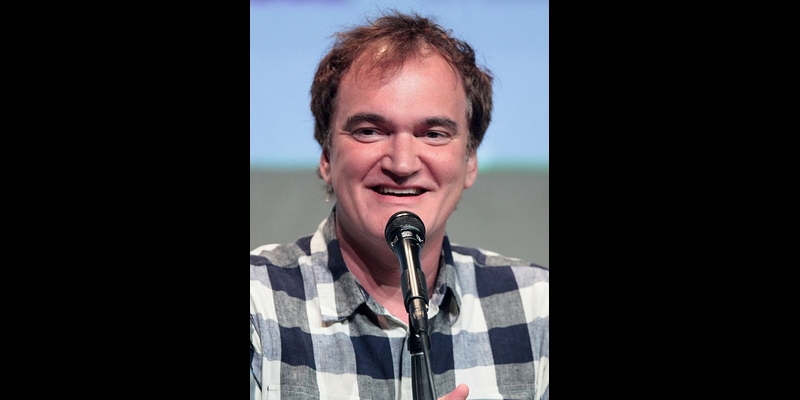
Tarantino was known as a go-to kid in his community of Los Angeles for film recommendations, with the director once stating, “when people ask me if I went to film school, I tell them, ‘No, I went to films,’”
After meeting with Harvey Keitel and director Monte Hellman, Tarantino was able to release his first film: Reservoir Dogs which he wrote, directed, and acted in. The film was an immediate hit; all that time watching movies had paid off. Major studies began to offer him work for mainstream films like Men in Black, but as a true artist, he flew to Amsterdam to work on the script for Pulp Fiction.
Again it paid off. He won Academy Award for best screenplay, and afterward his career skyrocketed, releasing Kill Bill part 1 and 2, and Inglourious Basterds, which received 8 nominations and won 1.
MORE Good News on this Date:
- Sun Records in Memphis began releasing its first records (1952)
- In Louisiana, Archbishop Joseph Francis Rummel ordered all Roman Catholic schools in New Orleans to end segregation (1962)
- U2 performed on the roof of a store in downtown LA to make the video for ‘Where The Streets Have No Name’, attracting thousands of spectators and bringing traffic to a standstill — police eventually stopped them (1987)
- NFL owners voted to make instant replay a permanent officiating tool (2007)
- Philippines signs a peace accord with the largest Muslim rebel group, the Moro Islamic Liberation Front, ending decades of conflict (2014)
111 years ago today, the first of 3,000 Japanese cherry blossom trees were planted in Washington, D.C. — a gift from the Mayor of Tokyo, Yukio Ozaki, and in 1935 marked the date of the inaugural Cherry Blossom Festival in the nation’s capital. Ozaki gave the trees to enhance the growing friendship between the United States and Japan and also celebrate the continued close relationship between the two nations.
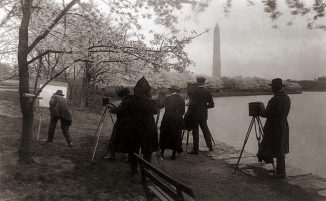
Large and colorful helium balloons, floats, marching bands from across the country, music and showmanship are parts of the Festival’s parade and other events.
In 1885, Eliza Ruhamah Scidmore, the first woman to sit on the board of trustees of the National Geographic Society, returned from her first trip to Japan, and enamored with the cherry blossoms of that nation, proceeded to lobby every U.S. Army Superintendent for the next 24 years about a project to plant cherry trees along the Potomac River.
After years of being turned down, in 1909 Scidmore decided simply to buy some trees and donate them to the District, writing a letter to Hellen Taft, the First Lady of President-Elect William Taft, suggesting the idea. By chance, the consul for Japan was visiting D.C. at that time, and suggested that an additional 2,000 additional cherry trees be planted and that they should be given in the name of Tokyo.
While the festival was suspended when the two nations declared war on one another, no great animosity or harm befell the trees, and they survived to grow into the beautiful pink clouds they are today. WATCH the history of the trees and festival… (1912)
47 years ago today, the first stops on the Washington, DC Metro subway system opened. The design of the Metro’s vaulted ceilings was so inspiring that it was voted No.106 on “America’s Favorite Architecture” on a list compiled by the American Institute of Architects.
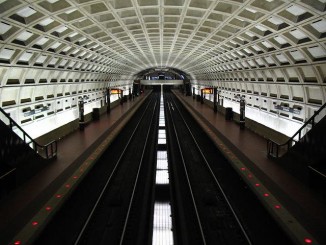
The Metro network now includes six lines, 91 stations, and 117 miles (188 km) of routes and is the second-busiest U.S. rapid transit system for number of passenger trips, after the New York City Subway.
Many of the clean, graffiti-free Metro stations were designed by Harry Weese and are examples of late-20th-century modern architecture with their heavy use of exposed concrete and repetitive design motifs. They also reflect the influence of Washington’s neoclassical architecture in their overarching coffered ceiling vaults. Weese worked with lighting designer Bill Lam for the indirect lighting used throughout the system. (1976)
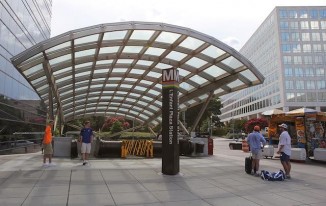
168 years ago today, Canadian inventor Abraham Gesner received U.S. patents for his innovation called kerosene, a cleaner lamp fuel for indoor and street lighting. His invention of the process to refine a liquid fuel from coal, bitumen, and oil shale mostly eliminated the use of whale oil from sperm whales. 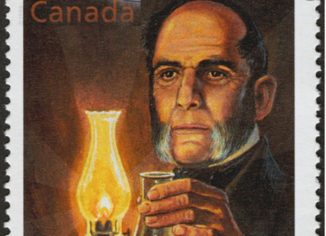
Gesner created the Kerosene Gaslight Company and began installing lighting in the streets in Halifax and elsewhere, and soon expanded to the U.S. where he created the North American Kerosene Gas Light Company. He also was an influential figure in the development of the study of Canadian geology and natural history. In fact, he founded “Gesner’s Museum of Natural History”, in Saint John, the first public museum in Canada. (1855)
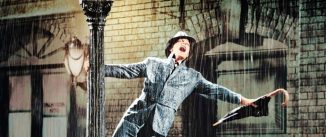
And, 71 years ago today, the musical comedy Singin’ in the Rain, starring Gene Kelly and Debbie Reynolds, premiered at Radio City Music Hall in New York City. Directed and choreographed by Gene Kelly and Stanley Donen, the film has earned legendary praise as probably the best filmed musical ever made.
Sung by Gene Kelly, the iconic title song was written with lyrics by Arthur Freed and music by Nacio Herb Brown. WATCH the unforgettable scene… (1952)
SHARE the Memories, Milestones, and Music…